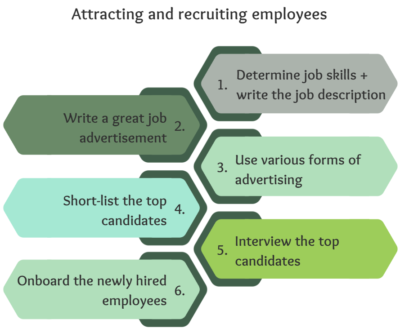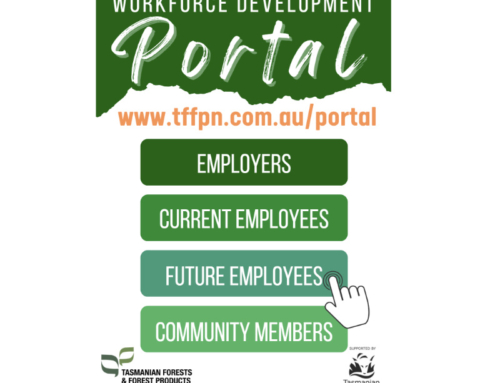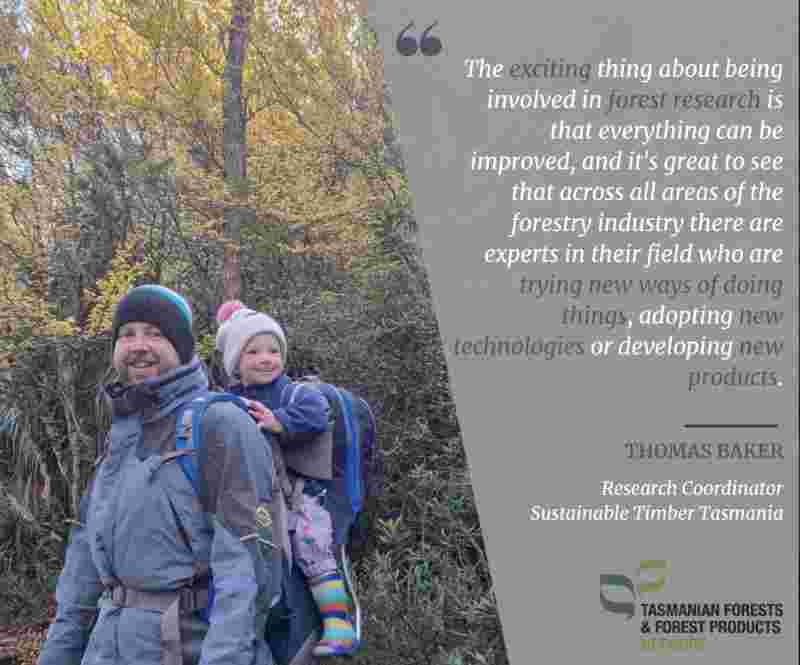Attracting + Recruiting Employees

The Tasmanian forest industry needs to not only replace its aging workforce, but also build a workforce for the future of new people with new skills.
Attracting and recruiting this future workforce may be challenging, but by focusing on best-practice, modern recruitment and diversity and inclusion in the workforce can provide opportunities.
Recruitment can be complex, from working out what the job is and the key skills required, to attracting candidates to the role, and then onboarding them into your workplace. Of course, recruitment professionals can provide expertise and services in this space, but there are a few key tips and tricks that can help make it easier for a small businesses.
There is a huge amount of information available, and this page provides links to some best practice attraction and recruitment information nationally and internationally.

| What to do | How to do it | More information |
|---|---|---|
1. Determine the skills needed for the job and write the job description |
It is important to be clear on skills, responsibilities, activities and qualifications for the role.
|
How to Write a Job Description | Indeed for Employers Inclusive Language Checker is a free language checker designed to catch potentially offensive language choices. A Guide to Preventing Discrimination in Recruitment from the Australian Human Rights Commission details legal obligations. |
2. Write a great job advertisement |
|
Winning job ads-how to attract the best talent
5 simple things to include in your job add to boost applications |
3. Use various forms of advertising |
|
Friday Offcuts is a specialist forest products weekly newsletter with opportunities for advertising.
NRM Jobs is a niche job board for opportunities in NRM. SEEK employer helps employers find the right person. LinkedIn has a few platforms to assist with recruitment. |
4. Short-list the top candidates |
|
Indeed provides information on shortlisting candidates.
SEEK details steps to shorlisting candidates. Employment Office provides a free shortlisting guide. |
5. Interview the top candidates |
|
SEEK How to Write Effective Interview Questions
Interview questions for employers Australian Human Rights Commission has information on avoiding discrimination in interviews. How to Conduct and Interview is a guide for employers. |
6. Onboard the newly hired employees |
|
New Employee Onboarding Process Flow
LinkedIn – Everything you need to know about candidate onboarding. |
Link/s [external]
- HR’s Complete Guide to Employee Experience takes a closer look at what employee experience is, why it’s important, how to measure it and best practices for making it a priority for an organisation.
- DCA Inclusive Recruitment Guide provides guiding principles for inclusive recruitment.
- 12 Modern Recruitment Techniques – article from Indeed provides details on technology based techniques.
- Australian Human Rights Commission provides A step-by-step guide to preventing discrimination in recruitment that notes employers recruit in different ways with some using in-house recruitment and others using recruitment agencies to short-list applicants.
- 10 Recruitment Trends for 2023 from PageUp highlights that jobseekers became empowered and employers needed to work harder to attract great people.
- How to attract the right candidates in 2023 from ELMO provides some tips to for organisations in the current competitive employment market.
- The 2016 Mercer Job Evaluation Return on Investment Snapshot Survey examines ways in which companies around the world benefit from implementing a job evaluation methodology, including time and cost savings.
- SEEK Employer Hiring Advice has some great information on hiring, from screening candidates to checking references and writing interview questions.
- Australian Human Rights Commission provides toolkits and guides for employers to promote diversity and prevent discrimination.
- Fair Work Ombudsman provides information for employers on rights, responsibilities and obligations.
- Business.gov provides a Hiring Employees Checklist and Employment Contract Tool to assist businesses to hire staff for the first time.
- Employers Guide to Hiring People with Disability is designed to build awareness of disability employment options, considerations and supports and increase employer’s capacity to provide inclusive and safe work environments.
















